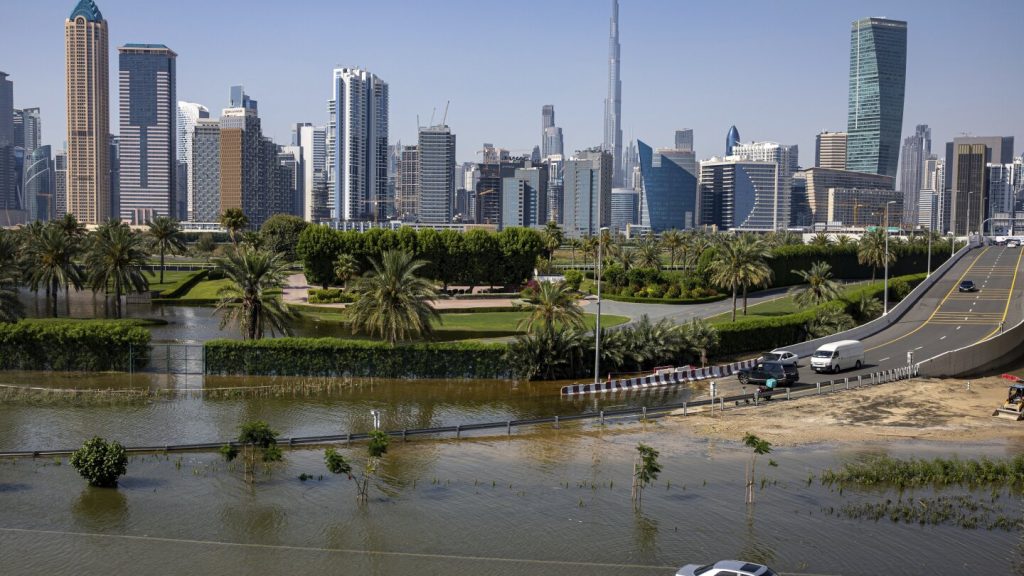The United Arab Emirates experienced heavy flooding this week due to record-setting rains, resulting in the deaths of three individuals. Two women suffocated inside their vehicle during the flooding, while a man died when his vehicle fell into a sinkhole. The exact number of deaths caused by the storm is still unknown, as UAE officials have not released any information. The UAE, known for its arid desert climate, typically sees little rainfall, but a massive storm that forecasters had been warning about for days swept through the country’s seven sheikhdoms. By the end of Tuesday, Dubai had received over 142 millimeters of rainfall, well above the average for the region.
Dubai International Airport, the world’s busiest for international travel, faced disruptions due to the heavy rainfall. The CEO of the airport stated that they hoped to return to a normal schedule within 24 hours. However, long-haul carrier Emirates announced on social media that local check-in for passengers traveling on its flights would be halted until early Saturday to support operations recovery from the recent bad weather. FlyDubai, a low-cost carrier, also experienced disruptions. Meanwhile, neighboring Oman also experienced intense flooding in recent days, with authorities reporting a death toll of at least 21 people.
The massive storm that swept through the UAE and Oman brought unprecedented amounts of rainfall, causing severe flooding and leading to several fatalities. The UAE, known for its dry climate, was ill-equipped to handle the amount of rain that fell in such a short period of time. The impact of the storms on infrastructure, transportation, and daily life in the affected areas has been significant, with airports and airlines facing disruptions and difficulties in resuming normal operations. The extent of the damage caused by the flooding is still being assessed, with officials working to assist those affected and restore services to normal as quickly as possible.
The heavy rainfall and subsequent flooding in the UAE and Oman serve as a stark reminder of the impact of extreme weather events on vulnerable regions. Climate change is likely to increase the frequency and intensity of such storms, posing a growing threat to countries with limited resources to mitigate the effects of extreme weather. The need for improved infrastructure, disaster preparedness, and climate adaptation measures is highlighted by the recent events in the UAE and Oman. As authorities work to address the immediate challenges posed by the storms, it is essential to also consider long-term solutions to enhance resilience and protect communities from the impacts of climate change.
The deaths and disruptions caused by the storms in the UAE and Oman raise questions about the readiness of countries in the region to cope with extreme weather events. In a region known for its arid climate, the sudden onset of heavy rainfall and flooding can have devastating consequences, as seen in the recent events. The loss of life and damage to infrastructure serve as a wake-up call for authorities to reevaluate their preparedness and response mechanisms for natural disasters. As the frequency of such events is expected to rise due to climate change, investing in resilient infrastructure and effective disaster management becomes imperative to protect lives and livelihoods in the face of increasingly unpredictable weather patterns. The lessons learned from the recent storms in the UAE and Oman should prompt a reassessment of policies and practices to better safeguard communities from the impacts of extreme weather events.


